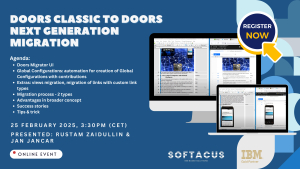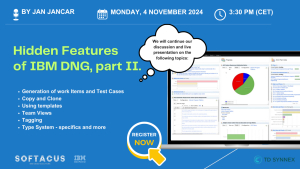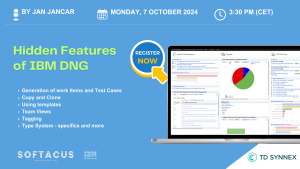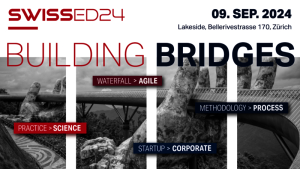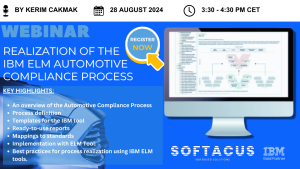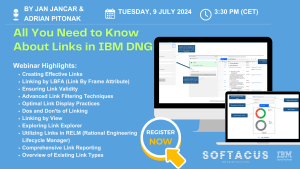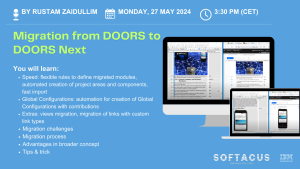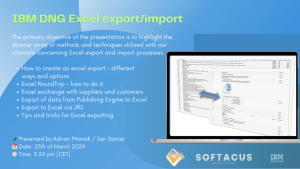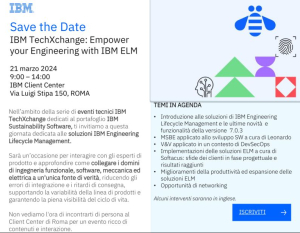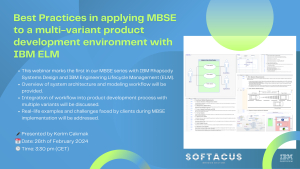Displaying items by tag: ELM
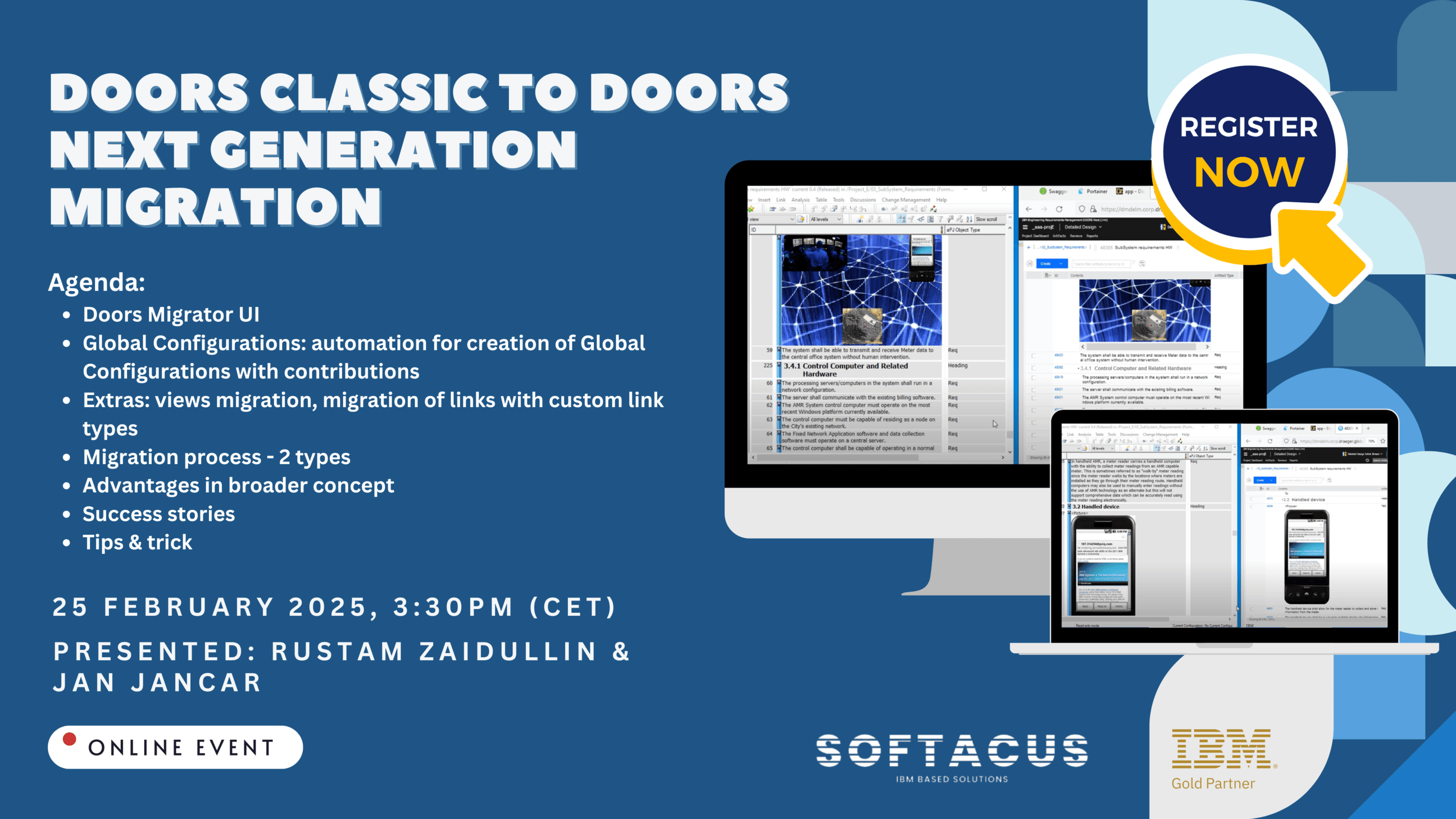
Are you considering a move from IBM DOORS Classic to DOORS Next Generation (DNG)? With increasing demands for collaboration, traceability, and modern workflows, migrating to DNG is becoming essential for many organizations.
However, migration isn’t just about switching tools—it requires careful planning, technical expertise, and a strategic approach. In our upcoming webinar, industry experts will walk you through the migration process, best practices, and real-world insights to ensure a seamless transition.
Yet, migration isn’t a simple click of a button. It requires careful planning, technical expertise, and a clear understanding of best practices—which is exactly what we’ll cover in our upcoming webinar.
Webinar Details
📅 Date: 25 February 2025
🕞 Time: 3:30 PM (CET)
💻 Format: Online Webinar
🎤 Speakers: Rustam Zaidullin & Jan Jancar
Link for registration: https://zoom.us/meeting/register/ocRKOfVyR2S-lZW30mYx6w
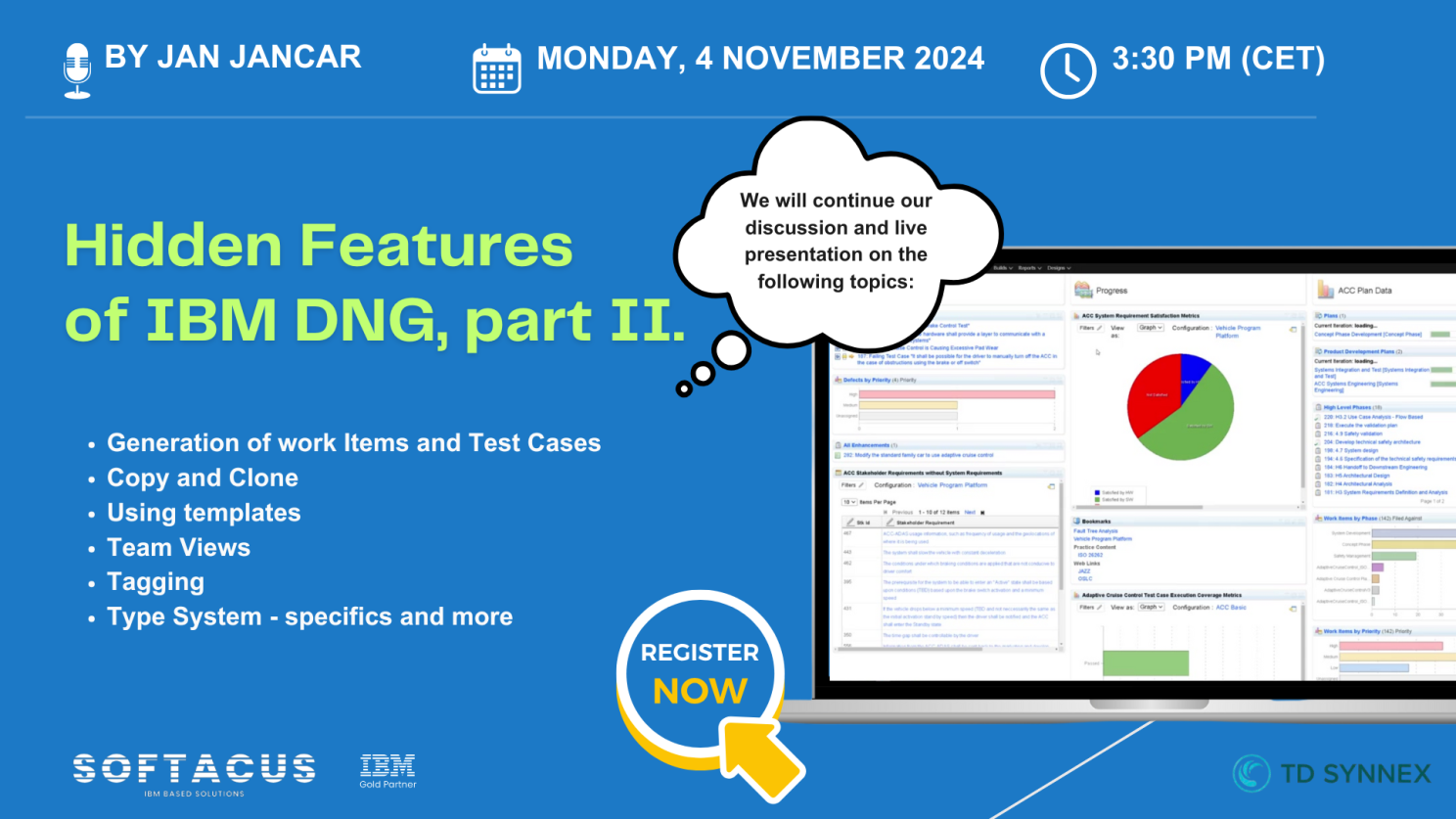
In the second part of our webinar on Hidden Features in IBM DOORS Next, we dived even deeper into the DNG features such as:
- Generating Work Items & Test Cases
- Copy & Clone functionalities
- Using Templates
- Team Views
- Tagging
- Type System specifics
If you missed the first live session on the topic, just drop us an email to This email address is being protected from spambots. You need JavaScript enabled to view it. and we will be happy to send you the recording.
This webinar is sponsored by TD Synnex Switzerland.
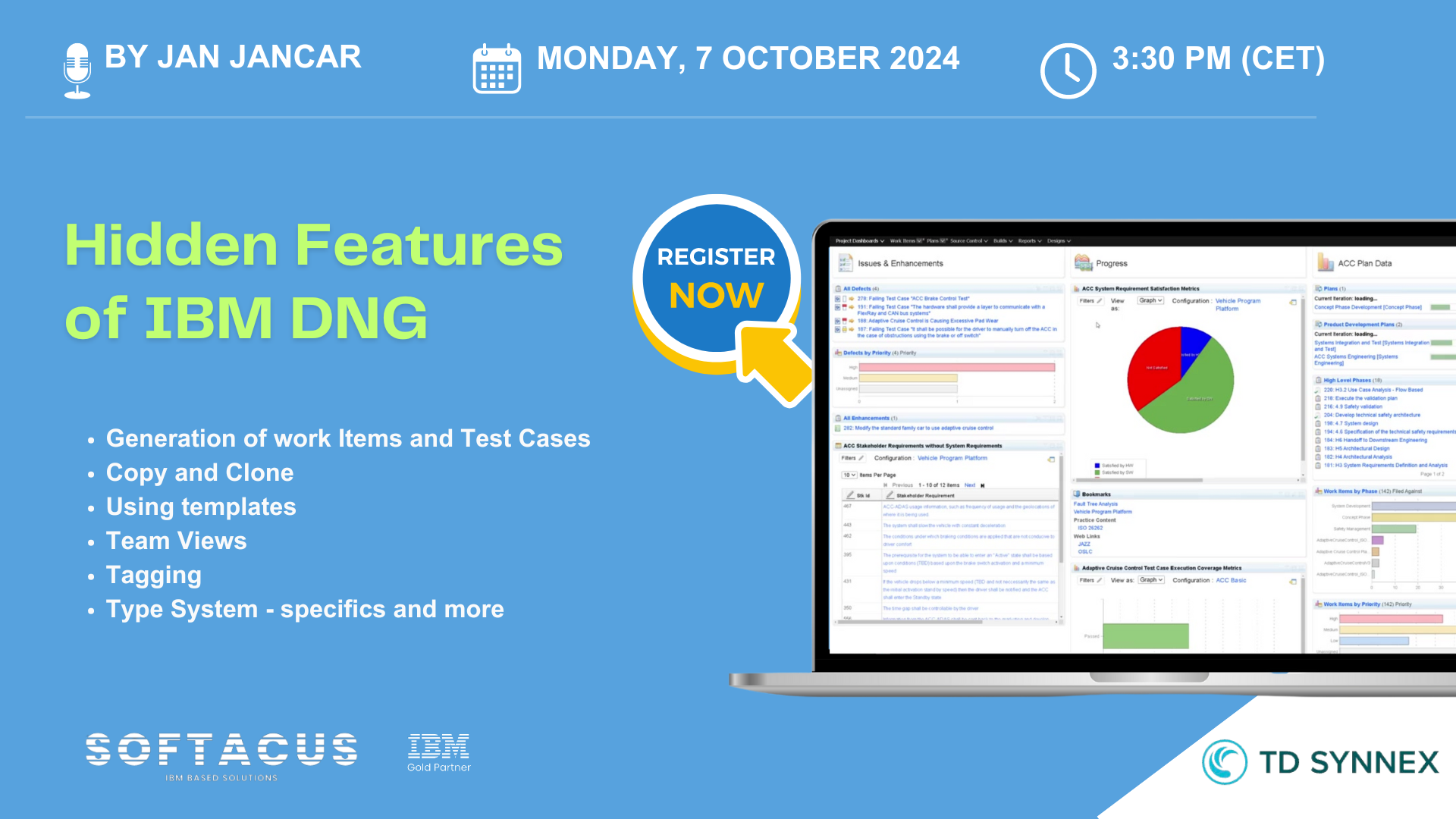
During the session, will explored powerful but often overlooked features of IBM DOORS NG that can make a big difference in how you manage requirements, including:
- Generating Work Items & Test Cases
- Copy & Clone functionalities
- Using Templates
- Team Views
- Tagging
- Type System specifics and much more
The webinar was generously sponsored by TD Synnex Switerland.
If you missed the live session, send us an email to This email address is being protected from spambots. You need JavaScript enabled to view it. and we will be happy to send you the recording.
Contact us if you need assistance with the IBM ELM tools.
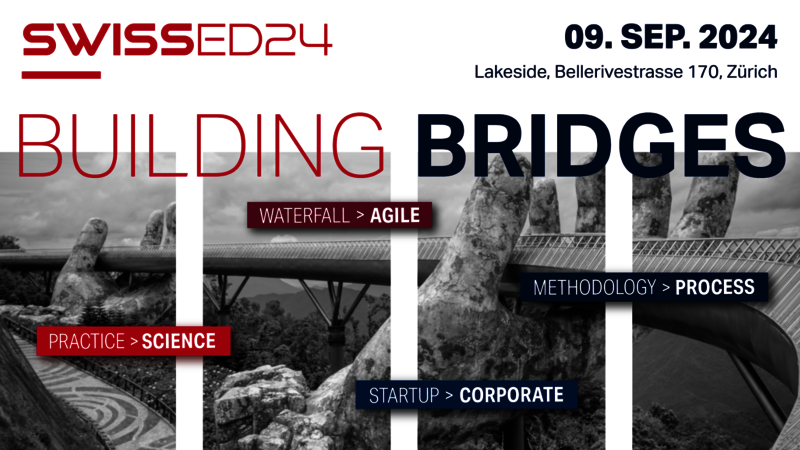
Join The Swiss Systems Engineering Day 2024 (SWISSED24) on the 9th of September 2024 in Zürich at the beautiful Lakeside venue.
This hybrid event brings together first-class presenters and practitioners, to share knowledge and experience on how to plan, develop and manage systems in an efficient and successful way.
The key theme of SWISSED24 is "Building Bridges," where we explore the transformative journeys from:
- Practice to Science
- Waterfall to Agile
- Startup to Corporate
- Methodology to Process
Our colleague Jan Jancar will present at the conference on the topic Norm Traceability in System Configuration Management Context.
An event you don't want to miss! Register here
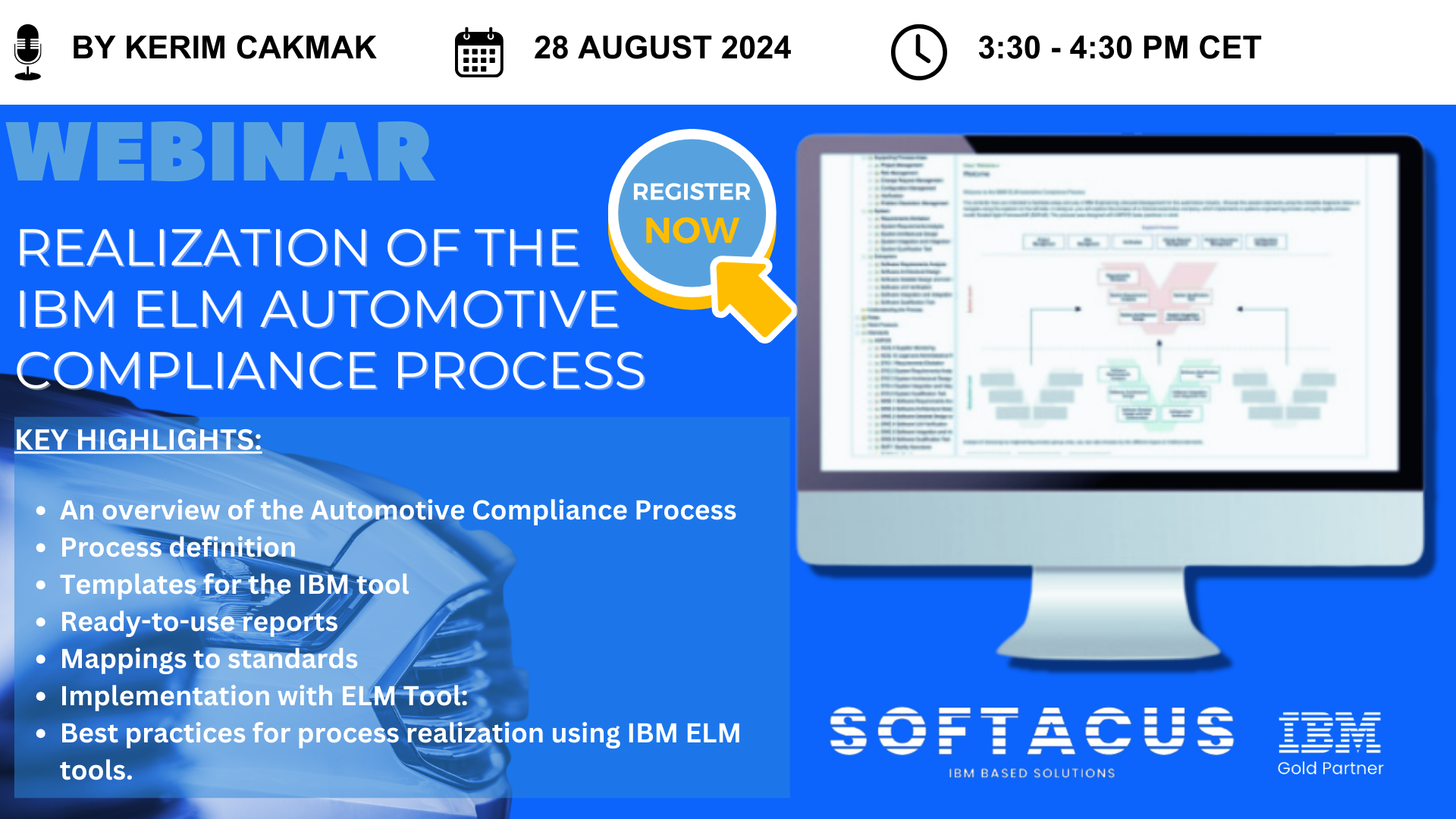
Join the Softacus webinar "Realization of the IBM ELM Automotive Compliance Process."
Date: 28. August 2024
Time: 3:30 - 4:30 pm CET
In this webinar, we will cover:
- An overview of the automotive compliance process
- What's "inside the box": process definitions, IBM tool templates, ready-to-use reports, and standard mappings
- Best practices for implementing the process with IBM ELM tools
Don't miss this opportunity to enhance your IBM ELM compliance processes!
Register now here
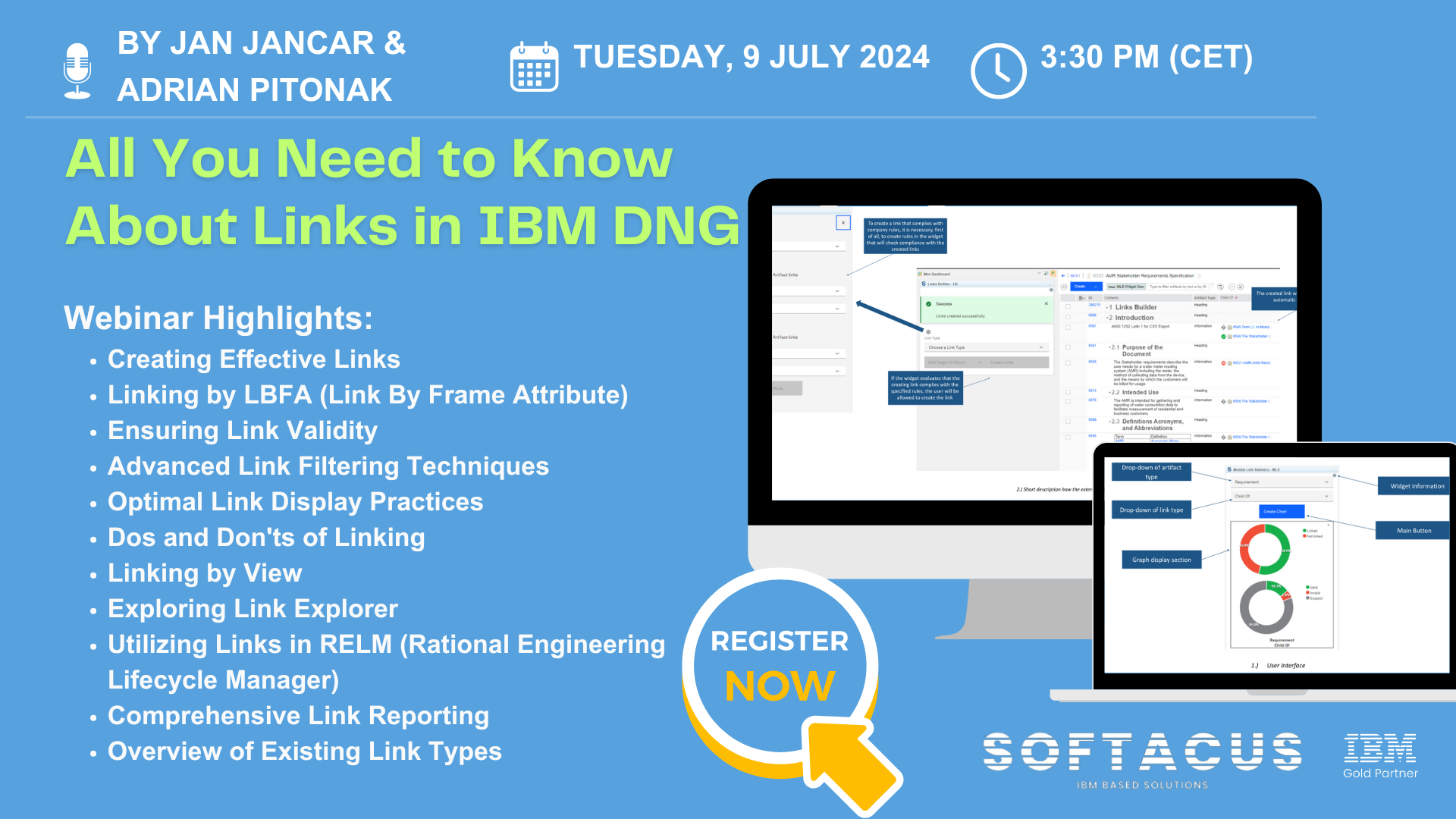
In the world of IBM DOORS Next, links are more than just connections—they're the backbone of effective requirements management.
These links enable traceability, ensuring every requirement is tracked throughout the lifecycle, from conception to delivery. By linking artifacts, teams can maintain alignment, validate compliance, and streamline their development process.
Understanding and utilizing these links effectively can make a significant difference in project success, enhancing collaboration and improving overall project visibility.
Register now for our webinar on July 9th at 3:30 pm CET where we will dive into topics like:
- Creating Effective Links
- Linking by LBFA (Link By Frame Attribute)
- Ensuring Link Validity
- Advanced Link Filtering Techniques
- Optimal Link Display Practices
- Dos and Don'ts of LinkingLinking by View
- Utilizing Links in RELM (Rational Engineering Lifecycle Manager)
- Comprehensive Link Reporting
- Overview of Existing Link Types
If you missed the live session, just reach out to us under This email address is being protected from spambots. You need JavaScript enabled to view it. and we will send you the recording.
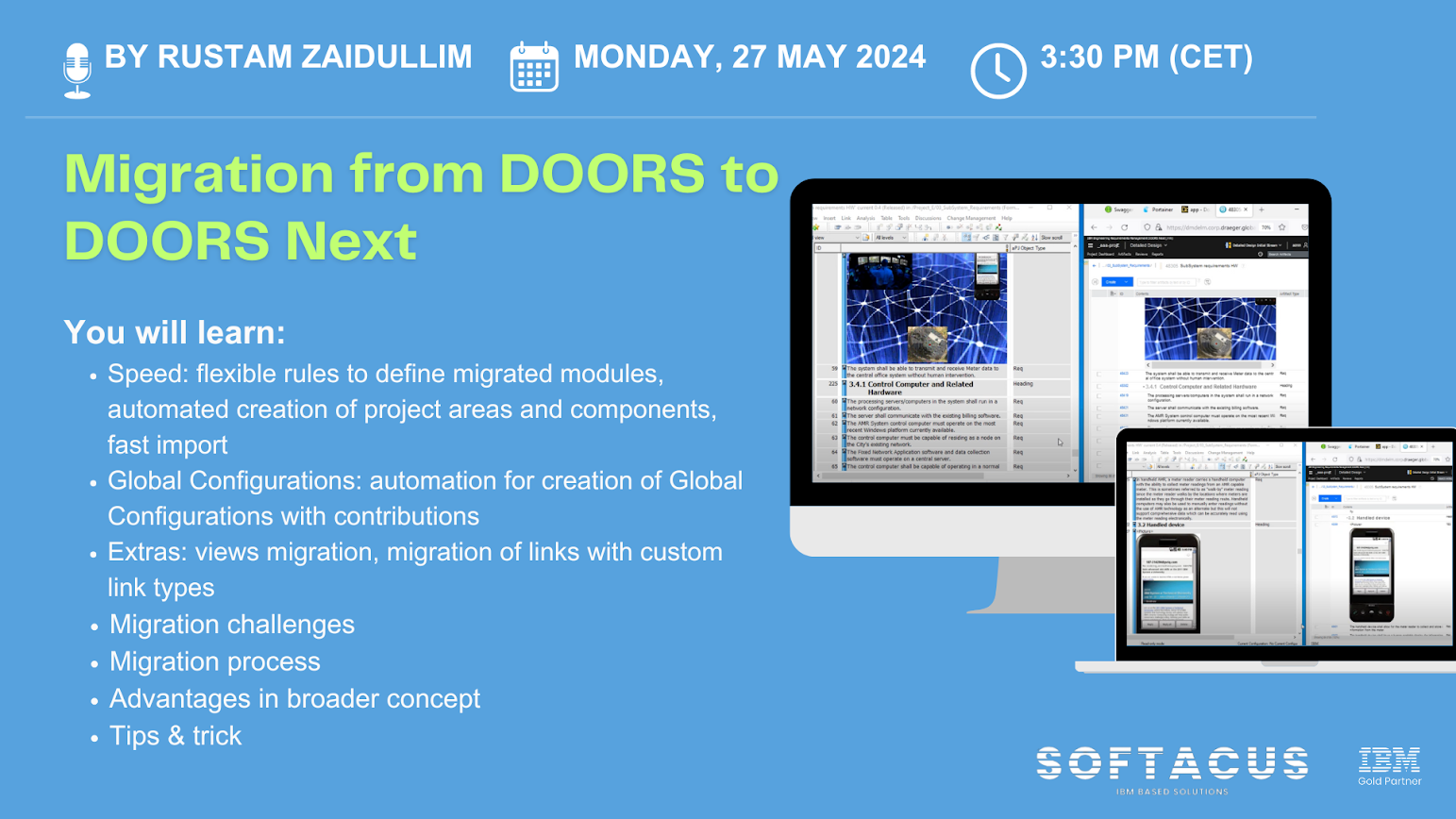
At Softacus, we excel in providing migration services from IBM DOORS to IBM DOORS Next Generation, ensuring a smooth and seamless transition for our clients.
Whether you're contemplating migrating from DOORS Classic to DOORS Next or simply seeking to explore the benefits of the latter, our upcoming webinar is for you.
Key topics that will be discussed:
- Custom link types usage for migrated links - link types can be defined based on source and target object's module path in DOORS Classic or DOORS Next
- Creation of nested Global Configurations structure based on created during migration DOORS Next streams and baselines
- Flexible definition of artifact types based either on a dedicated enumeration attribute or conditions built on queries for more attributes
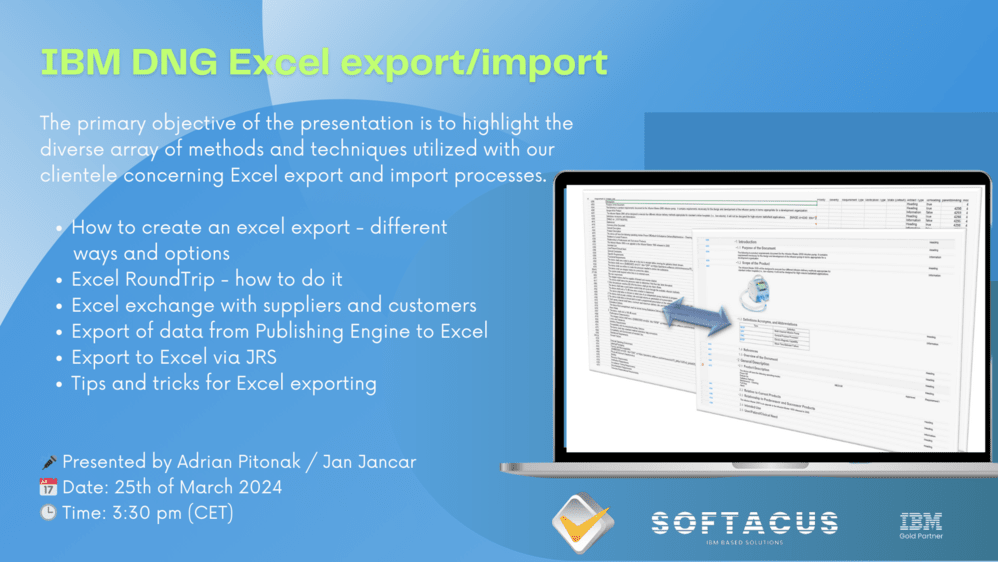
Join us for our upcoming webinar, featuring Adrian Pitonak and Jan Jancar from Softacus, as they delve into the topic of "IBM DNG Export/Import.
Event Details:
Date: 25th of March 2024
Time: 3:30 pm CET
Location: Zoom
Link for registration: https://zoom.us/j/93121909731?pwd=dXRWb3gxUXhMUFFJdnpLYlNHSTFLdz09
Agenda Highlights:
The primary objective of the presentation is to highlight the diverse array of methods and techniques utilized with our clientele concerning Excel export and import processes.
- How to create an excel export - different ways and options
- Excel RoundTrip - how to do it
- Excel exchange with suppliers and customers
- Export of data from Publishing Engine to Excel
- Export to Excel via JRS
- Tips and tricks for Excel exporting
This event is tailored for professionals and users of Doors Classic and DOORS Next Generation (DNG), whether you hold the title of or have a keen interest in Excel export and import processes.
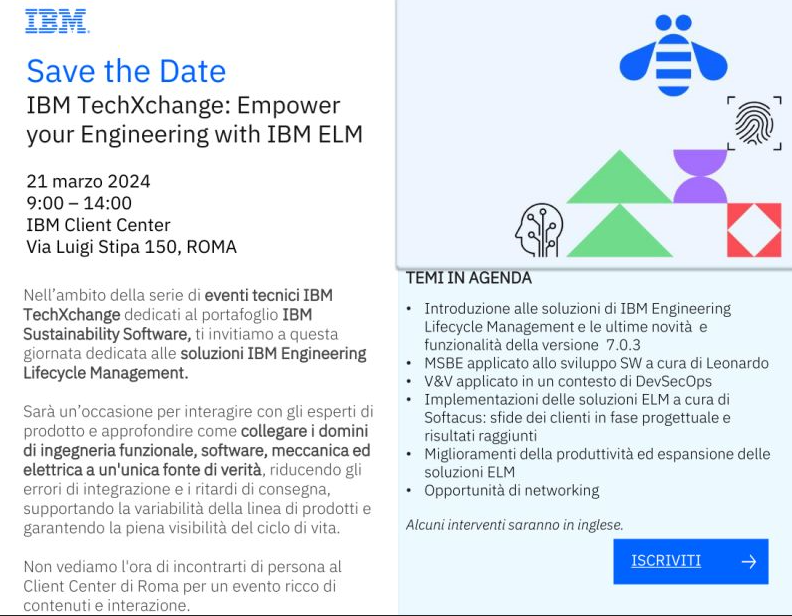
In today's fast-paced technological landscape, traditional engineering approaches are being outpaced by rapid advancements. This shift has led to increased demand for intelligent software-driven products across diverse industries, presenting challenges such as budgetary constraints, time limitations, resource scarcity, and stringent safety and quality standards.
Addressing these challenges requires integrated solutions that bridge functional, software, mechanical, and electrical engineering domains, providing a unified source of truth. IBM Engineering Lifecycle Management (ELM) is designed to mitigate integration failures and delivery delays, accommodate product line variability, and ensure comprehensive lifecycle visibility.
Join us at IBM TechXchange: Empower your Engineering with IBM ELM in Rome, Italy, on 21st March, 2024 to:
- Explore the latest iteration of IBM ELM, version 7.0.3, which builds upon years of industry leadership to deliver enhanced capabilities and efficiencies.
- Discover how these advancements empower engineering professionals to effectively manage complex systems and software development projects, meeting deadlines and exceeding expectations.
Our Solution Director, Jan Jancar, will present use cases of implementations of ELM, including challenges which often happens during the implementation.
Register here
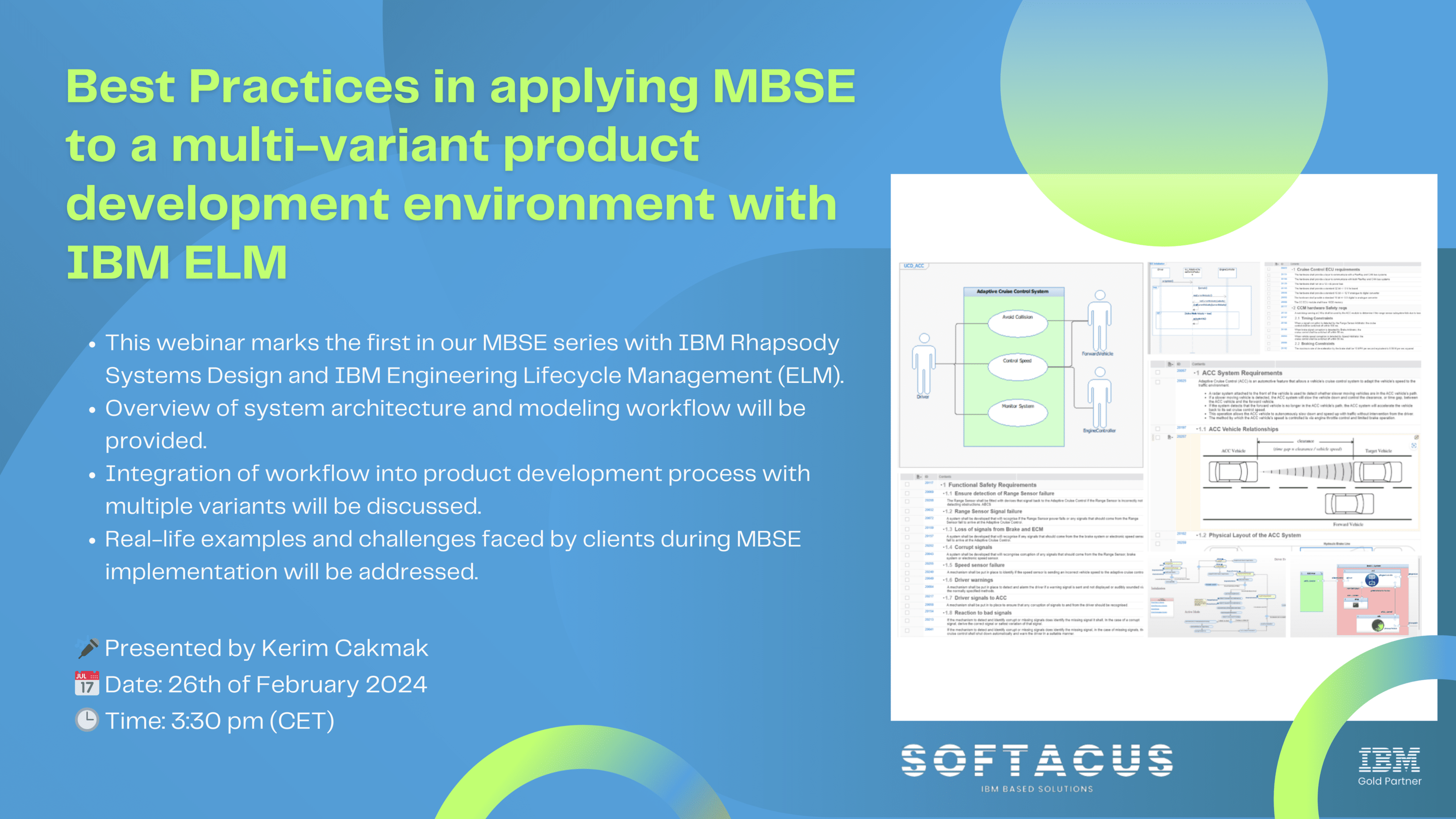
Join us for our upcoming webinar series on Model Based Systems Engineering (MBSE) with IBM Rhapsody Systems Design and IBM Engineering Lifecycle Management (ELM)!
1st webinar of the series is on the topic: Best Practices in applying MBSE to a multi-variant product development environment with IBM ELM
Date: 26.02.2024
Time: 3:30 pm CET
In this inaugural webinar, we'll provide an insightful overview of applying MBSE to a multi-variant product development environment. Our experts will share best practices and real-life examples, focusing on system architecture and modeling workflows.
Benefits of joining the webinar:
- Gain valuable insights into implementing MBSE in a multi-variant product development environment
- Learn best practices from real-life examples and industry experts
- Discover how MBSE integrates seamlessly into the product development process, enhancing efficiency and productivity
This session will lay the groundwork for future deep dive sessions in our webinar series.
Don't miss out on this opportunity to enhance your understanding of MBSE and its application with IBM Rhapsody Systems Design and IBM ELM. Register now to secure your spot!
Sign up now: https://us02web.zoom.us/meeting/register/tZwkdOqppzsiHNfZHaSN-dTVYIR19Q4ns1hM

